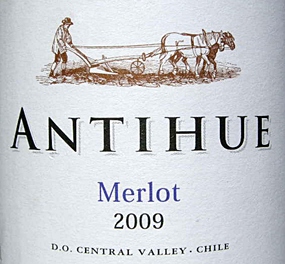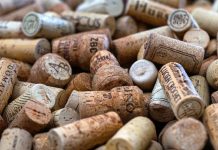Contrary to popular belief, Merlot is the most planted grape variety in Bordeaux. In France, the history of the Merlot (mehr-LOH) grape can be traced all the way back to the first century. It’s one of the world’s most planted grape varieties and even in 2004, there were over 640,000 acres world-wide. It’s on the increase, too. In Australia alone, there are over two hundred different brands of Merlot wine.
Merlot usually has a rather soft mouth-feel, so it makes a good introduction to red wines. The grapes produce deep ruby-red wines which are quite full-bodied with smooth tannins. They are excellent food wines. Merlot makes a good accompaniment to most meat dishes and goes well with pasta or even light cheesy snacks. You can drink Merlot with Spaghetti Bolognese or with a steak.
Throughout its long history, the most famous home of this wine has remained the Bordeaux region of France. One of the most famous Merlots of all time (it’s actually 95% Merlot and 5% Cabernet Franc) comes from Château Pétrus. Their wines fetch astronomical prices and the 1998 vintage will set you back over a thousand dollars a bottle. If you want something even more special, you can pay three times that figure for the 1961 vintage. Anyway, you’ll be relieved to know that the two Merlots I have for you this week are somewhat cheaper.
Terre des Anges Merlot (red), France (Villa, Bt. 444)
Here’s a jolly good little drinker and certainly worth a try. Although the South of France used to have a reputation for rather dodgy plonk, there’s now some really good wines coming out of the region.
I first tasted this one a couple of years ago and this more recent bottle shows it’s still delivering the goods. The company also makes a couple of other excellent varietals, including a very pleasant rosé, which is worth searching out. This wine is a clear ruby colour with a lovely sweet aroma of strawberries and cherries, but there are other intriguing aromas lurking underneath, so you’ll need to give it a good nosing. There’s no year shown on the label, so this is almost certainly a blend of wines from different years.
Nevertheless, it has an agreeable fruity taste, with a pleasing touch of acid and only the slightest hint of tannin. It’s quite light-bodied with 12.5% alcohol and has a long fruity-peppery finish. It’s a very pleasing everyday wine, ideal with light food or evening snacks.
The wine comes from the south west of Béziers down in the South of France. “Terre des Anges” of course means “The Land of Angels” and it’s absolutely on the mark. I am sure the angels would enjoy a few swigs of this to enliven their harp recitals.
Antihue Merlot 2009 (red), Chile (Foodland, Bt. 385)
Strange name, isn’t it? Sounds like something you’d spray on the car windscreen. However, to my relief, it tasted like wine and quite an attractive one too.

There’s an interesting earthy aroma which reminded me of dry creamy biscuits, together with the smell of herbs and even a faint reminder of beetroot in the background. Give it a bit of time and the red berry fruit will emerge. Actually, I’d be tempted to tip the entire bottle into a decanter. If you do this, let the wine splash vigorously into the decanter or wine jug, so that you really get the air into it.
The wine has a lively taste – quite sharp and spiky but there’s plenty of red berry fruit on the palate and a dash of herbs in the background. It’s quite light-bodied but unusually for a Merlot, it has an attractive zesty bite to the taste. The finish is long, dry and fruity. It’s a straightforward no-frills Merlot, very much in the style of a French bistro wine. The lively fruitiness and the 13% alcohol content would make it ideal for food, especially pasta dishes or red meat. I’m pretty sure it would go well with pizza. It might even help to clean your windscreen too, but on reflection I think I’d prefer to drink it.




